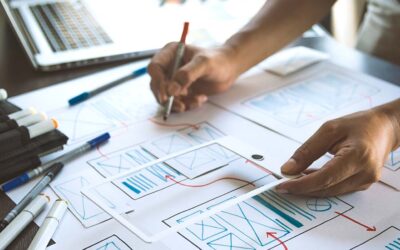The Benefits of an Integrated Museum CMS Front and Back-End

Rachael Cristine Woody
In this miniseries we’ve reviewed the different ways front-end portals for Museum Collection Management Systems (CMS) are offered and the costs involved when working with a front-end that’s separate from the CMS or offered as an “add on” to the back-end. This post concludes the miniseries with a review of benefits that come with a fully integrated front-end portal, and outlines the circumstances where an integrated front and back-end make sense.
This post is of particular use to museum staff who need supporting arguments to convince their boss to invest in a fully integrated CMS front and back-end.
What’s the Difference Between an Optional Back-end and an Integrated Back-end?
First, here’s a quick review of the main difference between an optional or “add on” CMS front-end and an integrated front-end.
An optional front-end portal is one that wasn’t built as a part of the CMS as a whole. The front-end is considered an optional feature and one that can be added onto the existing CMS product—a product that by default is just the back-end.
A fully integrated fronted portal is one that was built as a part of the museum CMS and is considered one whole unit versus an optional feature. The front-end portal functionality is completely integrated, equally invested in, and will grow as a part of the CMS product.
The Benefits of a Fully Integrated Portal
The benefits of choosing a fully integrated museum CMS are multiple. Not only does the integration help save direct and indirect costs, it also limits data issues, and cuts down on trouble-shooting and maintenance work. Here’s a full list of those benefits spelled out:
- An integrated front and back-end saves staff time and money during implementation, use, and maintenance.
- Integration eliminates “lost in translation” issues with data from one system to another.
- Time spent trouble-shooting and custom code needs is decreased significantly.
- Presentation of a portal that meets Web Content Accessibility Guidelines (WCAG) will be more easily achievable.
- The integrated portal will have to-the-minute updated information provided without having to refresh or re-index the front-end.
- An integrated portal will be more responsive to current needs—needing to work only with one system for the design and information flow.
A fully integrated portal is usually the best choice in any museum situation, and particularly so if the following conditions are present:
- The museum is short on staff time and expertise.
- The museum is short on cash for implementing two platforms, creating custom code, and providing ongoing maintenance.
- Museum staff are stretched thin and need one seamless system for sustainable workloads.
- The museum staff want to meet user expectations by offering a visually dynamic and robust front-end portal.
- Museum staff want to invest equally into their museum front-end as well as back-end because they understand that both sides of the CMS are equally important.
Conclusion
When it comes to the front-end portal for a museum CMS the best bet is to purchase a CMS platform that fully integrates the front and back-end. This choice will help you save staff time and money, will reduce the issues and workarounds needed for the portal to operate optimally, and will deliver a more engaging user experience to your visitors.
Additional Reading
If your museum is embarking on a the search for a new museum CMS then please check out the following posts on Lucidea’s Think Clearly Blog: 3 Things to Look for When Choosing a Museum Collections Management System, How to Begin Your Search for the Right Museum CMS, How to Form a Museum CMS Procurement Team, How to Test, Vet, and Purchase a New Museum CMS, and How to Identify Specifications for a New CMS. And don’t forget to grab your free e-copy of my book: How to Select, Buy, and Use a Museum CMS.

Rachael Cristine Woody
Register here for Rachael’s webinar, “How to Work with a Consultant on Museum Digital Projects” on September 28, 2022. Ms. Woody advises on museum strategies, digital museums, collections management, and grant writing for a wide variety of clients. In addition to several titles published by Lucidea Press, she is a regular contributor to the Think Clearly blog and an always popular presenter.
Never miss another post. Subscribe today!
Similar Posts
No-Code Digital Storytelling Example: Rembrandt’s Self-Portrait at Kenwood House
Explore how English Heritage’s Kenwood House uses the no-code platform Shorthand to bring Rembrandt’s Self-Portrait with Two Circles to life through visual storytelling and interactive design.
Exploring No-Code Digital Storytelling: Hoover’s “Fanning the Flames” Exhibit
Explore no-code digital storytelling with Hoover’s ‘Fanning the Flames’ exhibit. See how interactive tools (Deep Zoom Color Compare & Hot Spot) enhance user engagement and the visual experience.
An Introduction to Scrollytelling for Museums
Discover how museums use scrollytelling and digital storytelling platforms to create immersive narratives. This introduction explores key concepts and approaches to interactive storytelling.
Exploring Self-Determinate Multiple Pathways: An Example of Digital Storytelling
Discover how self-determinate multiple pathways offer flexible interactive storytelling in museum exhibits. Learn from the Tenement Museum’s ‘Your Story Our Story.’






Leave a Comment
Comments are reviewed and must adhere to our comments policy.
0 Comments